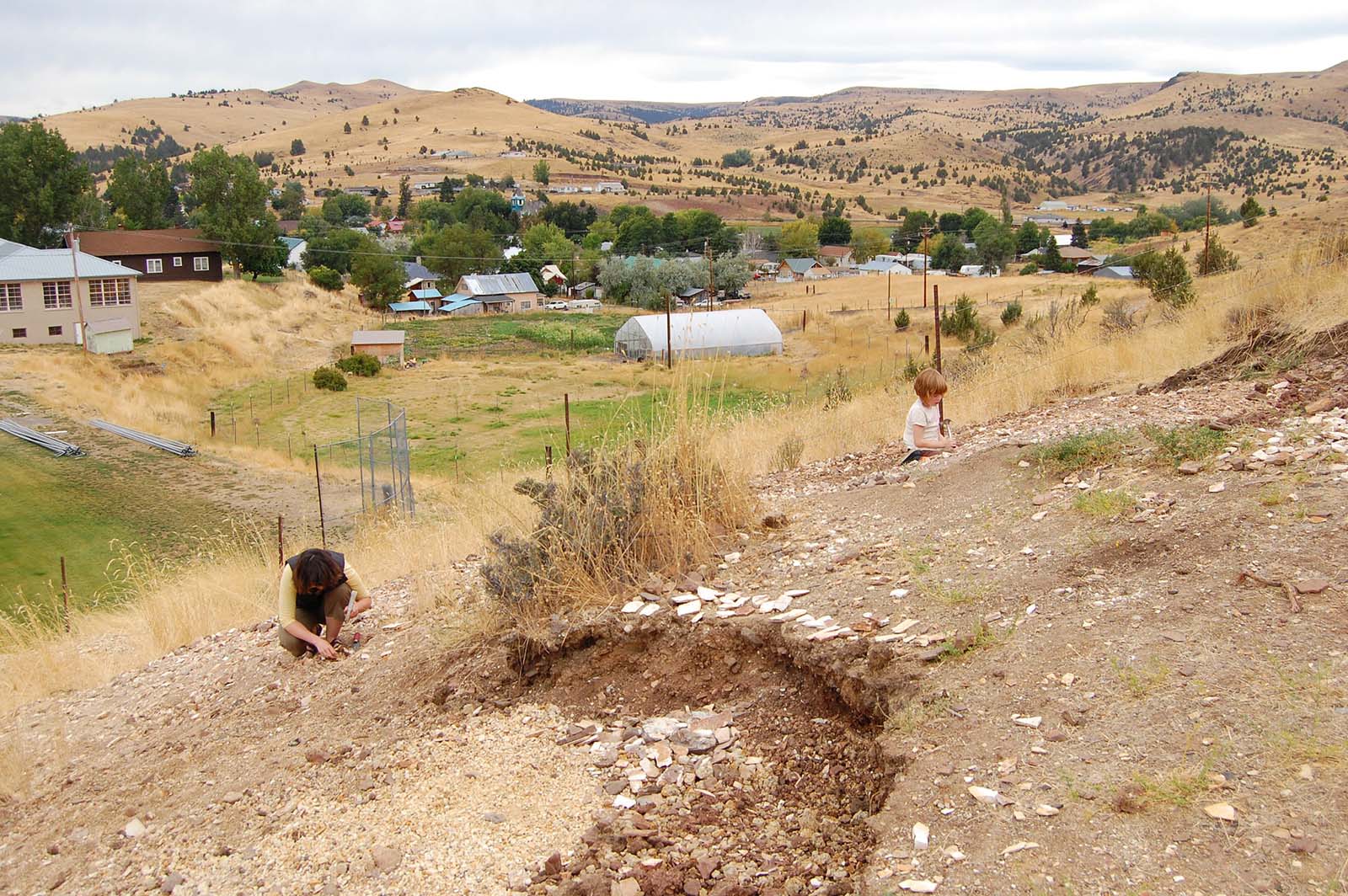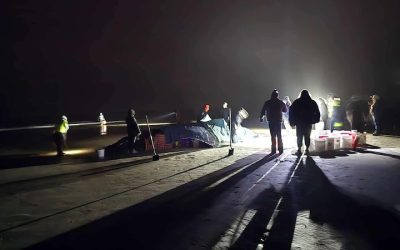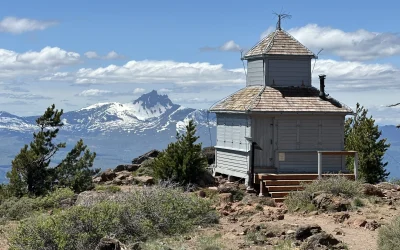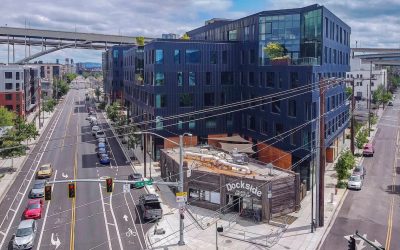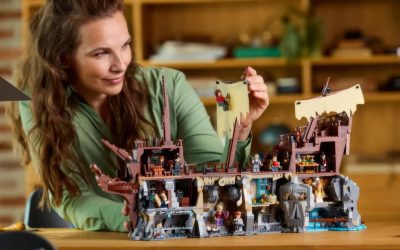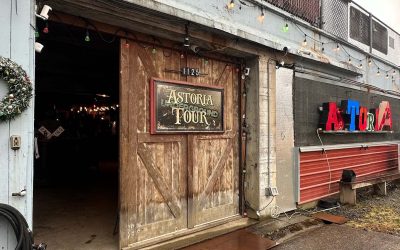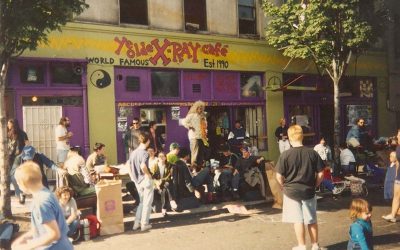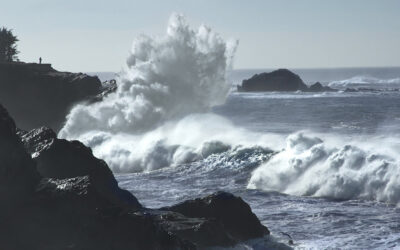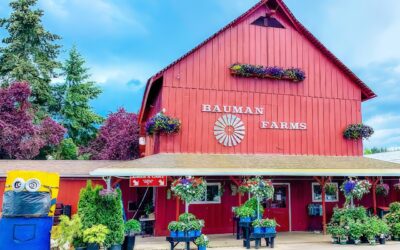Behind the modest campus of Wheeler High School sits what was once the muddy bottom of a shallow Oligocene-era lake — about 33 million years old. In those days, Oregon’s climate was milder and wetter, its valleys covered in wetlands and leafy forests.

Today, that ancient lakebed is preserved in thin layers of shale that crumble easily under a chisel, revealing delicate leaf and branch fossils from long-vanished trees. These remains belong to the Bridge Creek Flora, ancestors of the modern sycamore, alder, rose, oak, maple, and even a conifer called metasequoia, which shed its needles into the water every fall.
The result is a time capsule of Oregon’s prehistoric landscape — and one of the only public fossil sites in the state where anyone can safely collect specimens.

Most visitors uncover paper-thin impressions of leaves and twigs, each perfectly preserved after millions of years beneath ancient mud. Every now and then, someone is lucky enough to discover a tiny fish or salamander fossil, hints of the aquatic life that once swam in the calm lake.
While there are no large animal fossils at this particular site, paleontologists know that creatures like nimravids (saber-toothed cat-like predators), entelodonts (hog-like beasts), and oreodonts (sheep-like browsers) likely roamed nearby. You can see artistic depictions of these animals at the Thomas Condon Paleontology Center in the John Day Fossil Beds National Monument — just an hour east in Dayville.
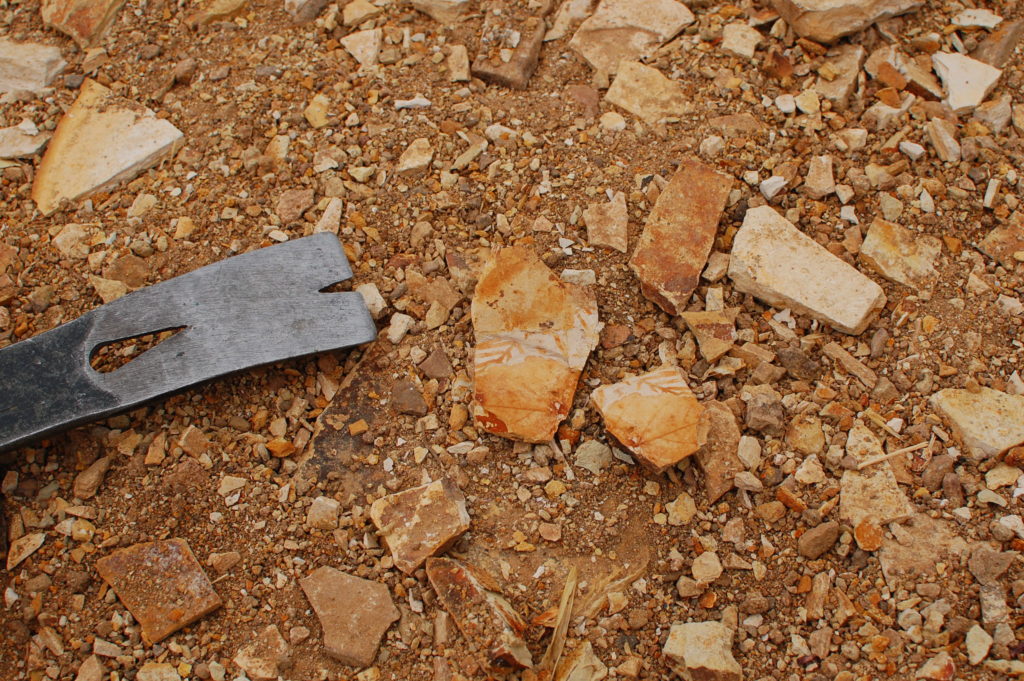
Visitors are welcome to bring small hand tools — a rock hammer, chisel, screwdriver, or even a sturdy butter knife will do. Gloves, a kneeling pad, and safety glasses make the experience more comfortable, and sunscreen plus plenty of water are must-haves in the summer heat.
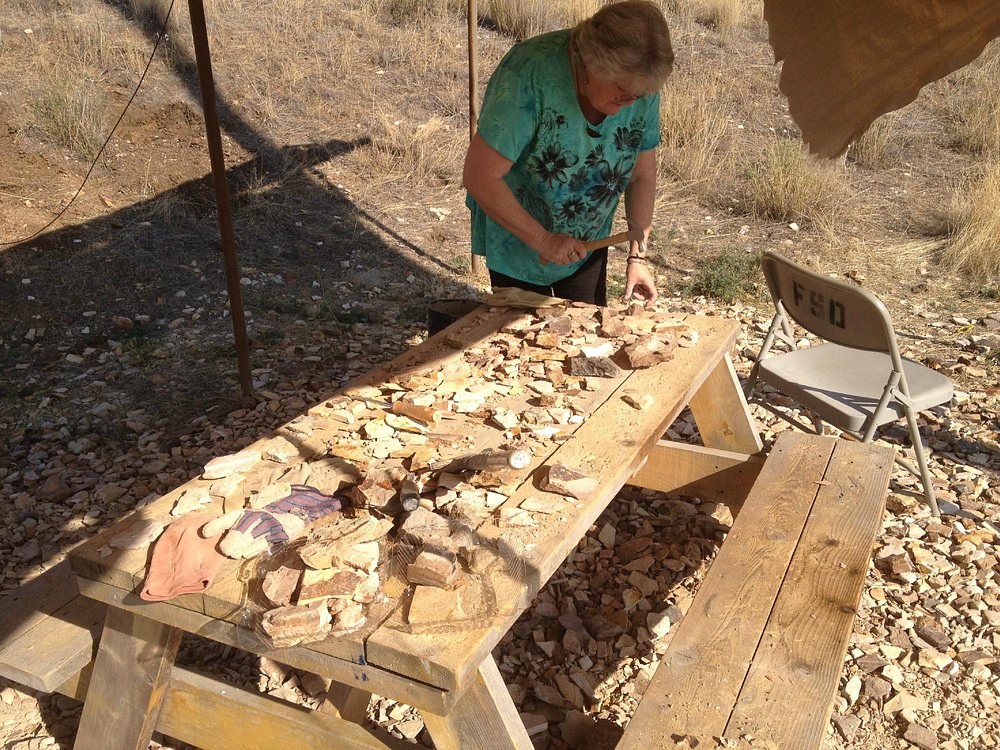
Some tools are sometimes available on-site, but it’s best to come prepared. Interpretive signs explain what to look for, and friendly volunteers at the nearby Oregon Paleo Lands Center & Gallery (just a short walk away) can help you identify your finds.
Hours, Fees, and How to Visit
You can dig for fossils behind Wheeler High School, located at
600 E B St., Fossil, OR 97830.
Admission Fees:
- Individuals – $5
- Family of four – $15 (each additional child $3)
- Groups of 20 or fewer – $25
For group reservations, contact Wheeler High School at (541) 763-0907.
For general information about local geology or to visit the Oregon Paleo Lands Center & Gallery (333 Fourth Street, across from the courthouse), call (541) 763-4480.
Pro Tip: During the winter months, both the fossil beds and the Paleo Center may operate by appointment only, so plan ahead before making the drive.
The surrounding landscape is part of the John Day Fossil Beds region, one of Oregon’s geological wonders. After you’ve pocketed your fossil treasures, take the scenic drive to see the Painted Hills or stop by the Thomas Condon Center to explore real fossil skeletons and reconstructed prehistoric environments.
Your small admission fee and any donations go directly toward supporting science education and the arts in Wheeler County’s rural school system — a great reason to dig in and give back.
It’s not every day you can say you held something 30 million years old in your hands. At the Wheeler High School Fossil Beds, you don’t just learn Oregon history — you uncover it.
Whether it’s your first visit or your fifth, this hands-on fossil hunt reminds us that even in the smallest corners of Eastern Oregon, there are stories written in stone waiting to be found all over again.

